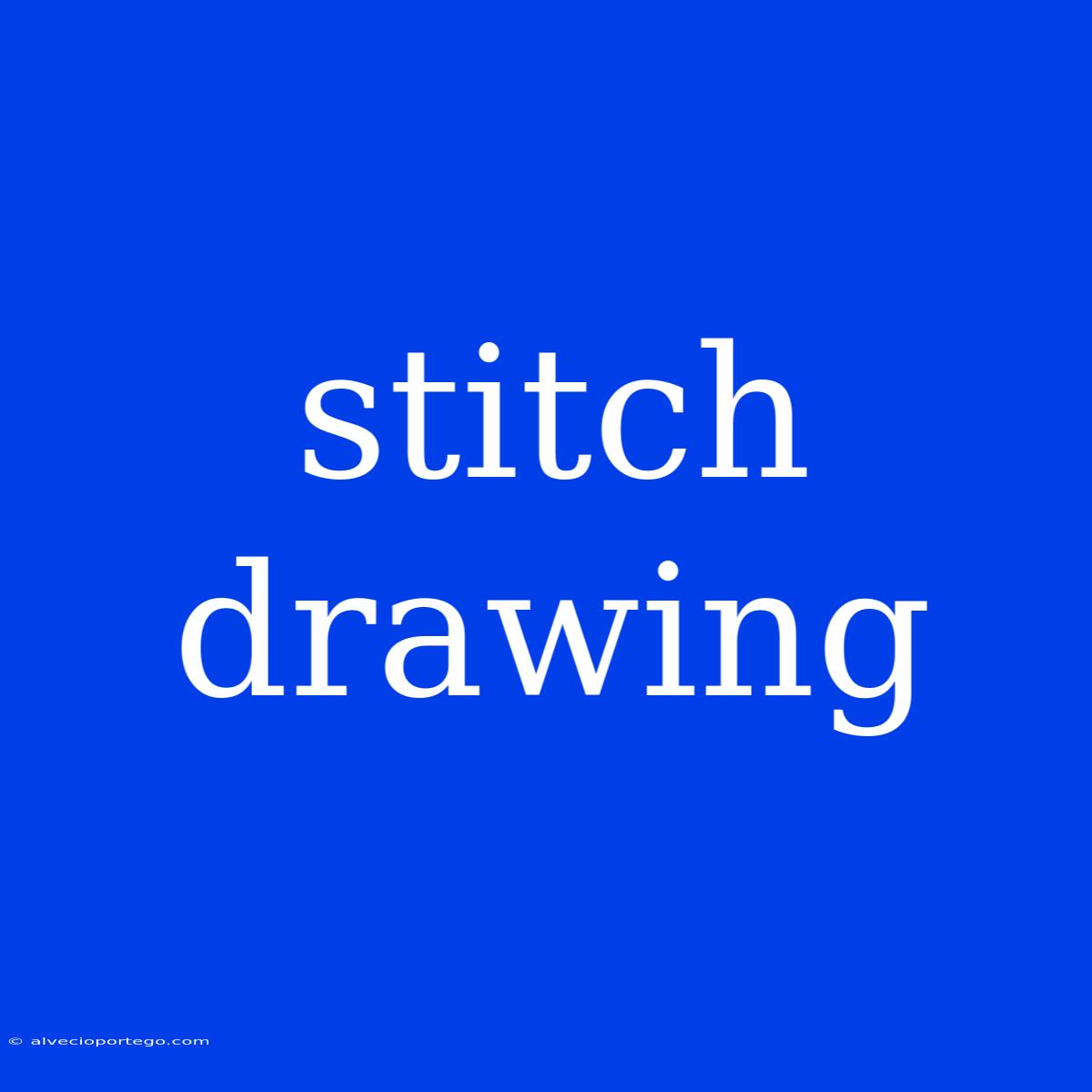Stitch Drawing: A Unique and Expressive Art Form
Stitch drawing, also known as thread drawing or embroidery drawing, is a captivating art form that blends the precision of drawing with the tactile beauty of embroidery. It involves using stitches as a drawing tool to create images, patterns, and textures on fabric. This unique art form offers a beautiful fusion of visual and tactile aesthetics, allowing artists to express themselves in a multifaceted and intricate way.
The Appeal of Stitch Drawing
1. Versatility and Accessibility: Stitch drawing is incredibly versatile, allowing artists to explore a wide range of styles, from realistic portraits to abstract designs. The accessibility of this art form is another key attraction. All you need is fabric, thread, and a needle, making it a budget-friendly and portable artistic pursuit.
2. Tactile and Sensory Experience: Stitch drawing engages the senses in a unique way. The act of creating with needle and thread is inherently physical and tactile, and the finished artwork can be felt as well as seen. This multi-sensory experience adds a depth and richness to the artistic process.
3. Expressive Potential: Stitch drawing offers a unique form of expressive communication. The artist's hand movements, the choice of stitches, and the texture of the thread all contribute to the overall feeling and message of the piece.
Techniques and Materials
1. Stitches: The beauty of stitch drawing lies in the diversity of stitches available. Artists can utilize basic stitches like running stitch, back stitch, and satin stitch, or explore more complex and decorative stitches like French knots and cross stitch.
2. Fabrics: While cotton fabric is a popular choice for stitch drawing, artists can experiment with a variety of textures and weights. From linen and silk to felt and canvas, each fabric offers a unique aesthetic and tactile experience.
3. Threads: The choice of thread can significantly impact the look and feel of a stitch drawing. Embroidery floss, silk thread, and cotton thread are popular choices, each offering different characteristics in terms of color, sheen, and texture.
Getting Started with Stitch Drawing
1. Gather Your Materials: Begin by gathering your fabric, needle, and thread. You can also choose to add embroidery hoops, scissors, and a pencil for sketching your design.
2. Sketch Your Design: If you are creating a specific design, it is helpful to sketch it out on your fabric using a pencil or fabric marker. This will provide you with a guide for your stitches.
3. Start Stitching: With your design in place, you can start stitching! Begin with basic stitches and gradually work your way up to more complex techniques as you gain experience.
4. Experiment and Explore: Stitch drawing is all about experimentation and creativity. Don't be afraid to try new stitches, colors, and fabrics.
In Conclusion
Stitch drawing offers a beautiful and expressive way to create art. It combines the precision of drawing with the tactile beauty of embroidery, allowing for a unique and captivating artistic experience. Whether you are a seasoned artist or a beginner, stitch drawing provides an engaging and rewarding way to explore your creativity and express yourself through the power of needle and thread.

